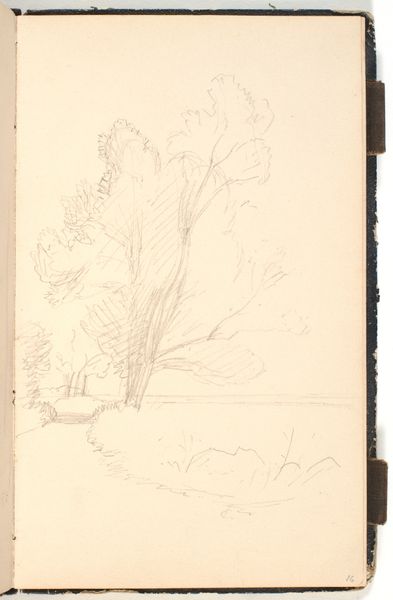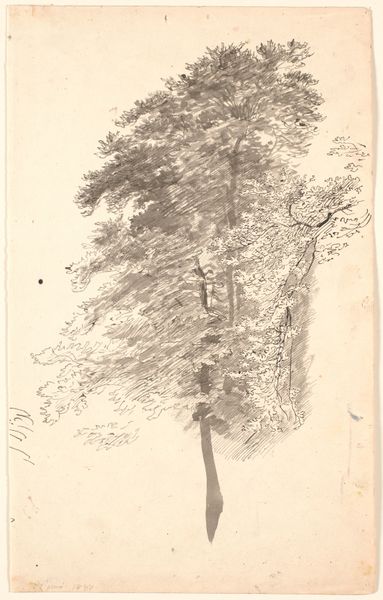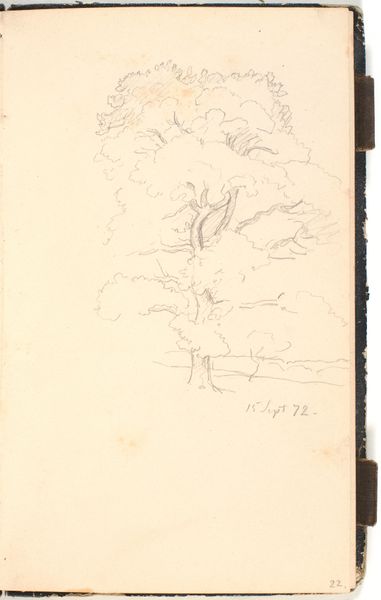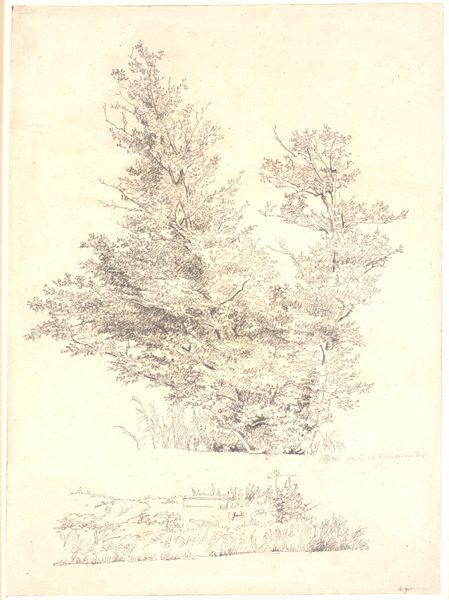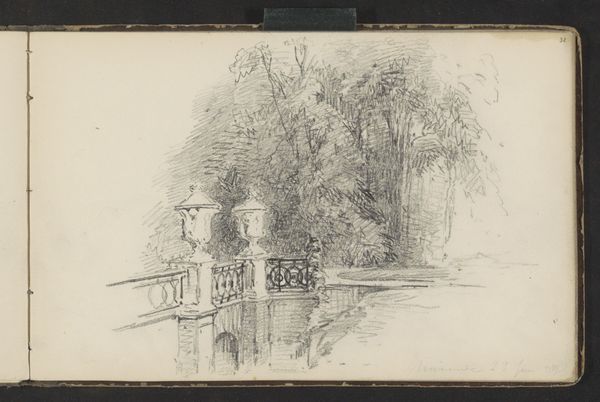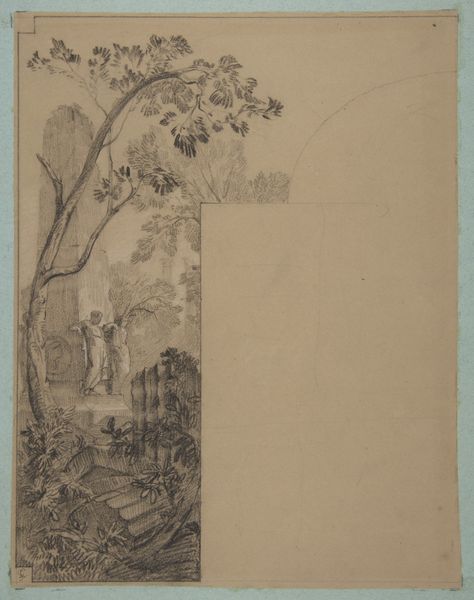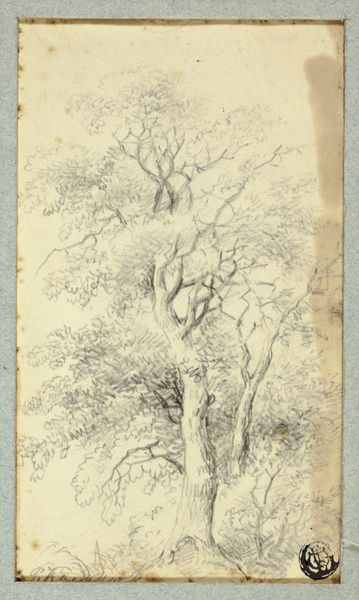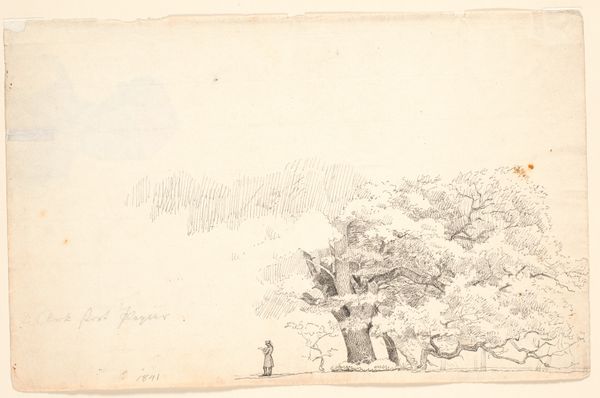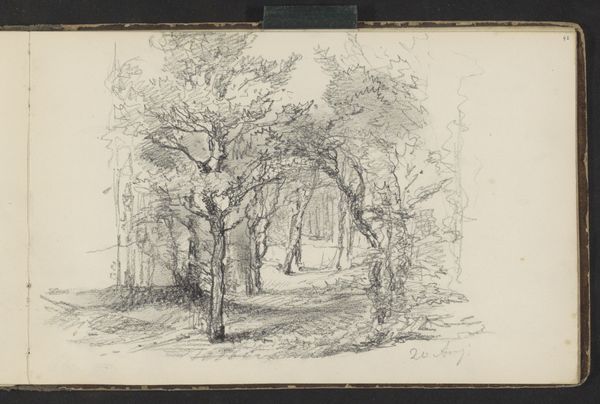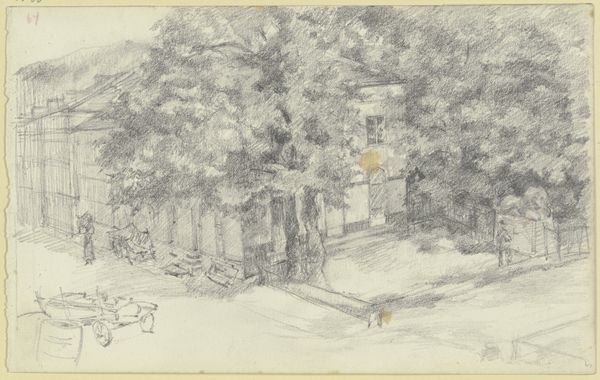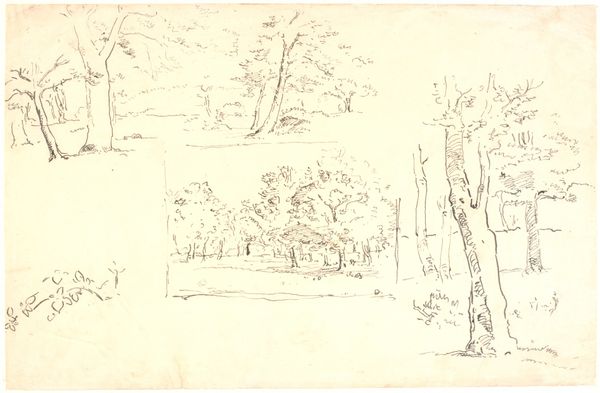
drawing, pencil
#
drawing
#
landscape
#
romanticism
#
pencil
#
realism
Dimensions: 160 mm (height) x 110 mm (width) (bladmaal)
Curator: Here we have Christen Købke's 1836 pencil drawing, "Port og træer ved Rosendal," or "Gate and Trees at Rosendal." It resides at the Statens Museum for Kunst. Editor: It’s deceptively simple, isn’t it? The loose sketchiness conveys a peacefulness, but there’s also something… almost melancholic in the starkness. The unadorned quality of the paper makes me consider scarcity in resources in the area as it has no decoration beyond its plain fibers. Curator: That melancholy you're picking up aligns with the Romanticism movement. Consider how trees and nature in general were often presented then—symbols of untamed emotion and the sublime power of nature, offering both refuge and a reminder of mortality. And Købke was an adherent to Realism and used sketches like this to develop greater art pieces later on. Editor: So, this wasn’t intended as a final product then, just a preparatory study to which end? The emphasis on texture and precise rendering using only graphite intrigues me. It feels utilitarian in a way; Købke focusing only on his needs in a landscape drawing. It makes one wonder about the socio-economic realities of artistic training and the costs of art supplies at the time. How does that reflect the democratization or elitism of artistic creation? Curator: A relevant question indeed. His use of pencil suggests both practicality and direct engagement with the subject—he seems focused on the precise qualities that can be produced through simple graphite on paper. Think too how that very simplicity invites us to contemplate the landscape’s enduring power irrespective of fancy artistic flourishes, much like an architect designing a structure. The trees flanking that archway are silent guardians of space and time. It beckons thoughts about entering a natural sanctuary, a visual metaphor for introspection. Editor: Well, now I'm really questioning how Romantic and raw his creative choices and habits are. To reduce and clarify elements shows he focused on pure intention as he refined his artistry. And as much as those arches and lines echo architectural intention, the artist also makes me think about the labor and consumption related to pencil manufacturing and paper production—all reliant on landscapes not so different from Rosendal. Curator: An excellent counterpoint. So, it's an intersection of man and nature: what has been preserved in opposition to what has been shaped for productivity, the symbolism for raw energy versus that of controlled artistry. The gate invites one vision of experience as much as the tree as a resource suggests another! Editor: It reminds me that art is more than just emotional expression; it's about understanding the conditions under which that expression becomes possible, down to the pencil in the artist’s hand. Curator: Yes, indeed! It leaves me appreciating the raw emotion held in something like the graphite stroke on fibrous paper, that simple act between eye, tool and scene.
Comments
No comments
Be the first to comment and join the conversation on the ultimate creative platform.
